Cherokee altered for 2019 as mainstream winner
Filed under: Equinox, Autos
WESTLAKE VILLAGE, Ca.
When Jeep brought out its all-new Compass redesign a year ago, I thought Jeep might be wise to simply discontinue the Compass, because the stylishly larger Cherokee and the much larger Grand Cherokee covered the larger SUV end of the scale, the Wrangler had the rugged end blanketed, and the new, funky and popular Renegade was closing in from the smaller end.
Shows what I know. The Compass came out for 2018 with a neat, contemporary front end, bypassing the more unique looking Cherokee to become more similar to the larger Grand Cherokee, with its seven-slot grille. While shorter, the Compass also had more interior room than the Cherokee.
That sort of left the Cherokee hanging out to dry. When it was introduced in 2014, the Cherokee was striking in its departure from the signature look of its Jeep siblings, with a more horizontal grille topped by squinty-eyed headlights on the upper edge. My son, Jack, and I agreed it was the best-looking member of the Jeep family.
With every imaginable nook of the SUV and CUV scope seeming to be covered, the Compass was surprising both because it is impressive even if it comes only with a 2.4-liter 4-cylinder engine, and for some reason, Jeep designers allowed it to have more interior room than the larger Cherokee. That’s like giving the little brother weight-training until he’s more capable than big brother.
Ah, but now we learn of Jeep’s long-range plan. With the Compass all new a a 2018 model, the next Cherokee has just been introduced as a 2019 vehicle, and invited auto media got a chance to drive it hard, on highways, bad roads, and off-road terrain a sane person might never consider driving a vehicle. In a word, the bigger and roomier Cherokee regains its rightful slot as being just under the Grand Cherokee, and more capable than the Renegade, Wrangler or Compass, if you count everyday highway driving and family duties as a prime consideration.
The new Cherokee uses the 2.4, which is the only engine in the Compass, but it also gets the impressive 3.2-liter V6 for optimum towing capability. The prize of the litter, in my opinion, is the new-design 2.0-liter 4-cylinder, which is an amazingly potent little powerplant that already is enjoying a strong start to its heritage. It is the same engine used by the all-new Wrangler, which is still the company’s over-achieving all-terrain champ. But in the Cherokee, the 2.0 pushes it to the front of the class, even against the Grand Cherokee for real-world use.
And all the Cherokee had to sacrifice to carve its new niche was its look of uniqueness. I’m sorry to see the squinty-eyed lights go away, and I’m a little disappointed to see Cherokee’s styling leave being unique behind for a return to the family focus of vertical seven-slot grille with nests of LED lights enclosed in a single pod on either side of the new grille.
But I will give it this: No matter how much you like the current Cherokee styling, once you’re inside, driving or riding, you don’t even think of how the exterior of your vehicle looks. The inside of the Cherokee has grown up a bit, to reclaim the volume that puts it in its rightful place above the upstart Compass — even though I now think the Cherokee and Compass look remarkably similar. To be annoying, I asked various Jeep executives which they’re rather have now as a family utility, and most of them had trouble choosing. Read more
Challenger GT goes, where others spin their tires
Filed under: Weekly test drives, Autos
By John Gilbert
What’s wrong with this picture, as they say? It’s a photo of a beautiful new Dodge Challenger parked along a North Shore cove in Two Harbors, Minnesota, overlooking an icy Lake Superior, and sitting on a snowy, icy parking area.
Everyone know that the resurrection of the “Big Three” ponycars — the Ford Mustang, Chevrolet Camaro, and Dodge Challenger — is heartwarming and attractive, but those wonderful hot cars from the late 1960s through 1970 had one thing in common: front engine and rear drive. You either chose judiciously when to venture out between November and April, or, better, you parked them during the winter months.
With their wide tires and ready-to-race demeanor, those cars traditionally are not what yoiu think you should be driving in slippery conditions.
However, we now must make an exception. While the Mustang and Camaro have been modernized in styling updates in recent years, the Challenger has stayed truest to its 1970-era roots. Until now. Dodge made the most publicity out of adding the SRT Hellcat powertrain, and the over-the-top 808 horsepower Demon model.
Flying well below that outrageous 2018 power display, Challenger has added a GT model, which comes with a strong 3.6-liter V6 engine and winter-beating all-wheel drive. Think about that: all-wheel drive! The GT term, which traditionally stands for Grand Touring (or Gran Turismo).sounds like it should be hotter than its siblings, even the Hellcat and other huge-engined monsters, but in reality is possibly the best real-world model of all the ponycars.
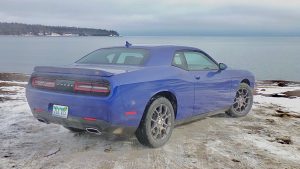
Challenger GT styling can be called “future-retro,” but for 2018, it houses a lot of technical advances.
The Challenger GT I recently test-drove was painted a stunning “IndiGo” blue, and otherwise, except for black alloy wheels and a tastefully small “GT” on its flanks, doesn’t jump out as a high performer. But take it up an icy avenue in Duluth, or drive off the street into the ice-covered parking area near Two Harbors, and when you want to go, just shift the 8-speed TorqueFlite transmission into “D” and step on the gas.
The familiar 3.6-liter V6 is perfectly tuned to operate the car, and it sends its 305 horsepower and 262 foot-pounds of torque down through its four specially-selected Michelin Primacy MXM4 tires, which we probably can call “high-performance/all-season” tires.
At its introduction, I was able to drive a Challenger GT on an icy test facility in Maine late last winter, and I got a real eye-opening experience at the FCA proving grounds at Auburn Hills, Michigan, where I drove an assortment of high-powered Challengers with their Hemi V8s up to over 800 supercharged horsepower. To my amazement, I found that on a specific part of that track, there is a serpentine stretch where the track gives you about a hundred-yard straight stretch, then a 180-degree switchback, back and forth for about six such turns.
I came away convinced that the precise steering and handling of the Challenger GT made the V6 model with AWD possibly the best-handling Challenger of all — and, in fact, maybe the best-handling car of any name ever made by Dodge. Read more
Light on new cars, Detroit show features trucks
Filed under: Equinox, Features, Autos
By John Gilbert
DETROIT, Michigan
Call it “Auto Show Light,” but the North American International Auto Show, formerly known simply as the Detroit Auto Show, seems to have gone on a diet, as the latest example of how the automotive world is changing. Swamped by the consumer tide of sports-utility vehicles rising above and beyond mere cars, much in the way the nation’s most prestigious auto show has added words in hopes of adding prestige to its name.
While spectacular new cars were fewer, there certainly were still some compelling introductions during the annual press previews on Monday and Tuesday, January 15-16, with the public show following through the following two weekends. But trucks had the upper hand.
Ram rolled out an impressive new 1500 pickup truck, with the massive, macho facade replaced by a far more refined grille and completely redone interior, with a giant vertical navigation/information screen about the size of a full-size iPad.
The new rounded-off look is a departure, and it was interesting that the new Ram won “Best in Show” from the respected auto website cars.com, and perhaps it was verification of how few new cars there were, since the Los Angeles Show in November, that pickups won several awards.
Ford offered a hybrid version of its new F150 pickup and made big news affirming the much-rumored return of the midsize Ranger pickup, which not only was a highlight of the show, but was a co-dominating model alongside a couple of new Mustang versions.
Honda’s Acura luxury division called it a concept, but the new generation of the RDX compact SUV made a strong impression, as trucks and trucklings dominated. Also, there were a number of concept vehicles — including one each from Nissan and its upscale Infiniti brand — and Toyota’s Lexus also showed a concept sporty SUV. Read more
Let’s say you select your own car, truck of the year
Filed under: Features, Autos
By John Gilbert
One of the highlights of every year, for a media auto fanatic, is to attend the North American International Auto Show at Detroit’s Cobo Hall. Traditionally the largest and most spectacular of the four “major” U.S. shows — along with Los Angeles, Chicago and New York — the Detroit show has the added attraction of being the center of the automotive universe, attracting engineers, designers and the usual overload of promotional types.
There are bigger shows worldwide, such as the Frankfurt Auto Show, which I’ve attended several times, and probably Tokyo, Paris, or Geneva, which I’ve never attended, but the Detroit show draws the auto company big-shots from all over the world, many of whom have their North American headquarters in or near Detroit, which, of course, is the home base for Ford, General Motors and FCA, or Fiat Chrysler Automobiles.
The Detroit show starts January 13th, and after three press conference dates, opens to the public. It has lost some of its luster in recent years, through no fault of its own. The Los Angeles show, held in November, upstages Detroit by attracting a lot of the Asian introductions, which has forced other countries, and the U.S. manufacturers, into also sending a preponderance of their “A” material to L.A. Chicago, meanwhile, is the most fun, because of the assortment of high-end restaurants and music venues in a tight little area accessible to the media and other major hotels. New York is reat fun, but it is scattered around Manhattan and may be completely overlooked by the locals.
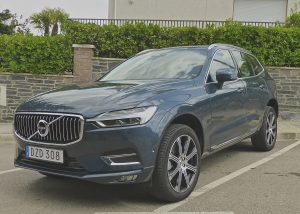
The Volvo XC-60 takes all the assets of the exceptional XC-90 and condenses them into the best SUV on the market — our truck of the year.
Detroit, however, remains the mainstay, and among the major attractions in Detroit is the naming of the North American Car of the Year, Truck of the Year, and Utility of the Year, as voted on by an independent jury of auto media types.
In the two decades I was part of that jury, I tried to influence all who would listen about improving the stature of the car of the year award. The jury did follow my strong suggestion about having a re-vote after naming the finalists, to encourage more coverage among jury members. I did originally think going to a separate category for utility vehicles made sense, but I reversed myself after some serious thought, when I realized that the rapidly expanding surge of SUVs was about to be accompanied by a reduction in legitimate trucks. Read more
Nissan’s Rogue worthy challenger for Toyota’s RAV4
Filed under: Weekly test drives, Autos
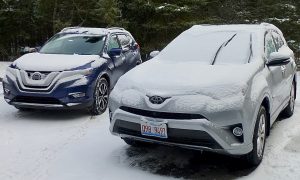
Cover them with an overnight snowfall, and the Nissan Rogue (left) and Toyota RAV4 are more similar — take your pick.
By John Gilbert
Early December in Northern Minnesota, forecast called for a high reaching a surprising 40 degrees. Three days later, it plunged from 39 to a single-digit low of 6 overnight. It was 13 the next day, then the forecast said heavy snowstorm blanketing the Duluth area, but the heavy stuff split, some of it staying north and the rest veering south, along Wisconsin’s South Shore, leaving Duluth and Lake Superior’s North Shore with a mere dusting. Couple days later, we got hit with another couple inches of snow.
The weather forecast can be boring, but not often in and around Duluth. It didn’t bother me, because of my luck of the test-drive draw that particular week. Almost as though they were related by potential, a Toyota RAV4 and a Nissan Rogue couldn’t have proven themselves more impressively. In the process, they provided a better understanding about why U.S. car-buyers are walking right past compact and midsize sedans to get to the SUVs across the showroom. Compact SUVs, often called CUVs for Crossover Utility Vehicles, have taken over.
Two of the mainstays of the compact SUV trend are Toyota’s RAV4, and Nissan’s Rogue. There are dozens of others, such as the Honda CR-V, and a couple of my personal favorites in the Hyundai Tucson and the Mazda CX-5.
But the RAV4 has become the largest-selling vehicle in Toyota livery, which is astounding because of the popularity of the Camry, and the Rogue has much more quietly become Nissan’s largest seller.
The more they advance, the more similar they seem to be, and by sheer coincidence, the week where we had the weird temperature shift from mild to numbing cold to snow, I happened to be able to switch back and forth between a 2017 RAV4 and a 2018 Rogue. Mother Nature didn’t stand a chance.
You are not likely to change a Toyota buyer over to a Nissan, nor will you convince a Nissan buyer to switch allegiance. Same goes for Honda, Mazda and now even Hyundai buyers, as well as several others. But there aren’t a lot of major letdowns in the highly competitive group.
Nissan has updated its Rogue for 2018, adding some very nice creature features to the interior. Plush, red leather seats and full connectivity stuff complete the scenario, and I particularly liked the auto-start switch on the key fob, which worked easier than any others I’ve tested. Push the button from your kitchen, it starts up, and when you climb aboard you just hit the starter switch again and take off. No stop and restart. I also liked the CD player, while most companies are leaving those out. You can even get a very small third-row seat arrangement, which probably will remain folded down flat for stowage throughout their life spans.
Handling is firm and precise, and you always have the feeling that the Rogue is solid and firmly in command of all roadway problems. You can get Rogues for a base price of about $24,000 while the test vehicle, an SL AWD model, starts at over $26,000 and moves upward. The choice of engines is simple. You can get a hybrid model, but the standard 2.5-liter 4-cylinder has 170 horsepower and 175 foot-pounds of torque, feeding its pep through a continuously variable transmission (CVT). Read more


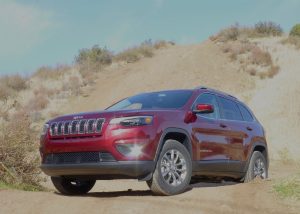
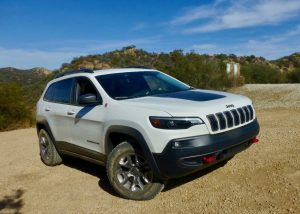
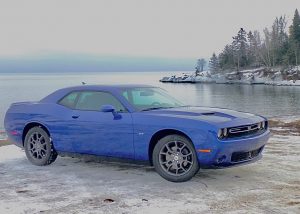
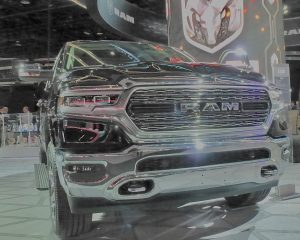
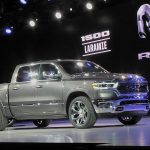
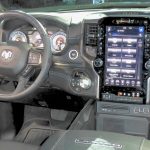
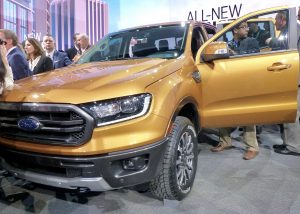
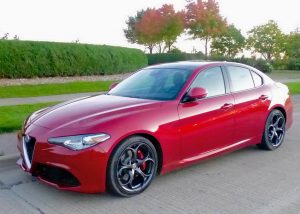
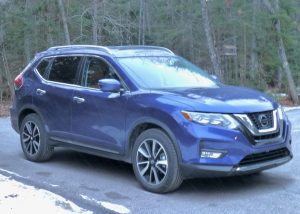

 John Gilbert is a lifetime Minnesotan and career journalist, specializing in cars and sports during and since spending 30 years at the Minneapolis Tribune, now the Star Tribune. More recently, he has continued translating the high-tech world of autos and sharing his passionate insights as a freelance writer/photographer/broadcaster. A member of the prestigious North American Car and Truck of the Year jury since 1993. John can be heard Monday-Friday from 9-11am on 610 KDAL(www.kdal610.com) on the "John Gilbert Show," and writes a column in the Duluth Reader.
John Gilbert is a lifetime Minnesotan and career journalist, specializing in cars and sports during and since spending 30 years at the Minneapolis Tribune, now the Star Tribune. More recently, he has continued translating the high-tech world of autos and sharing his passionate insights as a freelance writer/photographer/broadcaster. A member of the prestigious North American Car and Truck of the Year jury since 1993. John can be heard Monday-Friday from 9-11am on 610 KDAL(www.kdal610.com) on the "John Gilbert Show," and writes a column in the Duluth Reader.